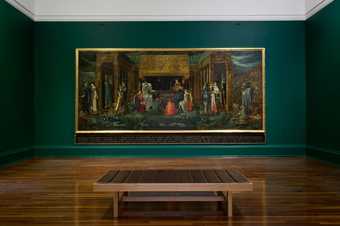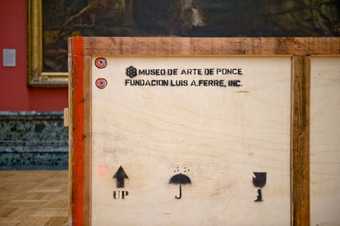
Fig 1. Museo de Arte de Ponce packing crate containing the Burne-Jones painting
Photo: © Tate
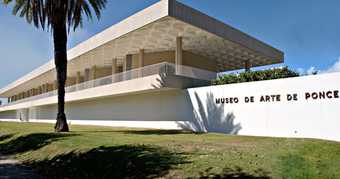
Fig 2. Museo de arte de Ponce, Puerto Rico
Photo: © Museo de arte de Ponce, Puerto Rico
Sir Edward Coley Burne-Jones The Sleep of Arthur in Avalon 1881–98
The work was purchased for the Museo de Arte de Ponce in Puerto Rico by the island’s governor and founder of the museum, Don Luis Ferré, in 1963. The vast canvas measures 2.79 x 6.50 metres. It was loaned to Tate Britain, along with Frederic Leighton’s masterpiece Flaming June 1895 by the museum while its galleries underwent a major renovation and expansion programme.
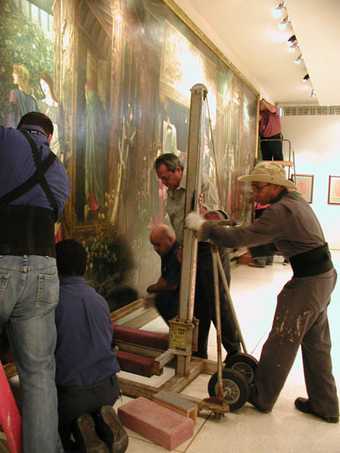
Fig 3. De-installation in Puerto Rico of Sir Edward Coley Burne-Jones’s The Sleep of Arthur in Avalon
Photo: © Museo de Arte de Ponce, Puerto Rico
The painting is in oil on canvas and was started in 1881. Burne-Jones worked on it for 17 years; he even moved into a studio large enough for the purpose, but died before it was complete. While some areas are fully realised, close examination of the unfinished portions reveal that some of the instruments have no strings and figures have socks but no shoes.
The canvas itself is made up of three pieces of cloth, and the two vertical stitched joins are visible when a light shines across the canvas from one side.
Transporting the painting and its frame
Its transport to the UK and mounting for display at Tate Britain was a real challenge for conservators at both galleries. The only way that this vast painting could be removed from its gallery was by rolling the canvas. This operation was undertaken with the greatest of care to ensure the vulnerable joins and the turn-over edges of the paintings were not damaged.
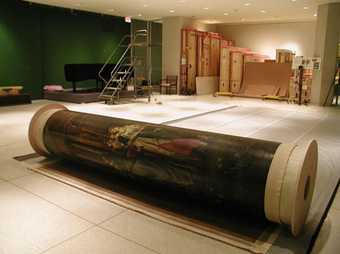
Fig 4. Canvas rolled and ready for packing
Photo: © Museo de Arte de Ponce, Puerto Rico

Fig 5. Loading area at Puerto Rico Airport
Photo: © Museo de Arte de Ponce, Puerto Rico
The work was conserved in Puerto Rico before its transportation. Its fragile edges were re-enforced and the whole canvas glue-paste lined. The lining, (mounting a second canvas on the back of the original) was probably done when the painting was originally made, as added protection due to its overall size.
Its heavy-weight hardwood stretcher has eight vertical bars and three horizontal ones with keys and expandable joints allowing its dimensions to be increased slightly to take care of changes in the fabric such as sagging. The stretcher was taken apart and travelled in a separate crate with the frame, which was also deconstructed for the trip.
A team effort at Tate Britain
Preparations for the arrival and re-stretching of this work involved most of Tate’s collection care department including Registrars, Art Handling, Frames Conservation, Conservation Technicians and Paintings Conservation.
Four conservation technicians put the stretcher together and two frames conservators also got involved when the frame was reconstructed. Tate Britain registrars co-ordinated with a large team from art handling to have around eight art handlers manoeuvre the cases into the gallery space.
Re-stretching had to take place right in the gallery as the work, once stretched again, could not be moved within the Tate due to its size. The floors were covered with protective materials to allow the painting to be unrolled face down.
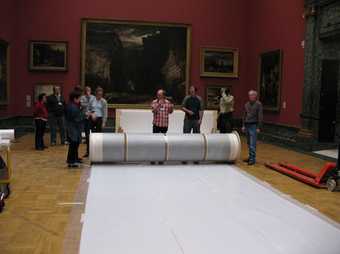
Fig 6. Team of art handlers, conservators and technicians preparing to unroll the canvas at Tate Britain
Photo: © Tate, London
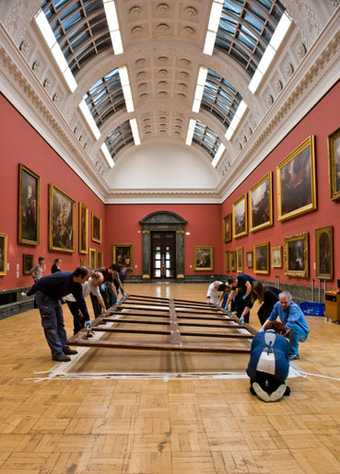
Fig 7. The stretcher being placed on top of the unrolled canvas
Photo: © Tate, London
Re-mounting and hanging the work
Unrolling took place slowly. To re-mount the painting conservators and conservation technicians worked opposite each other to tension the canvas and staple it at the reverse to its stretcher.
The keys were tapped out at the end to improve canvas tension even further by expanding the stretcher size slightly once the canvas was on. The real challenge occurred in bringing the work off the floor evenly and getting it upright without distorting it. It took a large team of highly trained art handlers to manoeuvre the piece into position for re-framing. Once fitted back in to its frame the careful process of raising and installing the work onto its supportive brackets could go ahead.
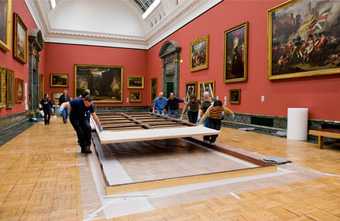
Fig 8. Manoeuvring the work to its frame for re-framing
Photo: © Tate
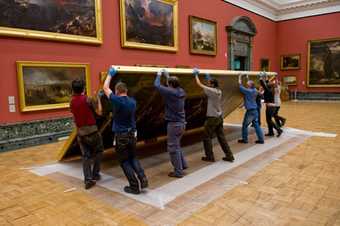
Fig 9. Carefully raising the work on its frame
Photo: © Tate
An ongoing monitoring process
Once installed, the entire surface was checked carefully by paintings conservators from Museo de Arte de Ponce and Tate Britain. Any potentially fragile areas were noted so that they could be monitored throughout the time the work remained at the gallery. The painting has remained in very good condition while on view at Tate Britain.

